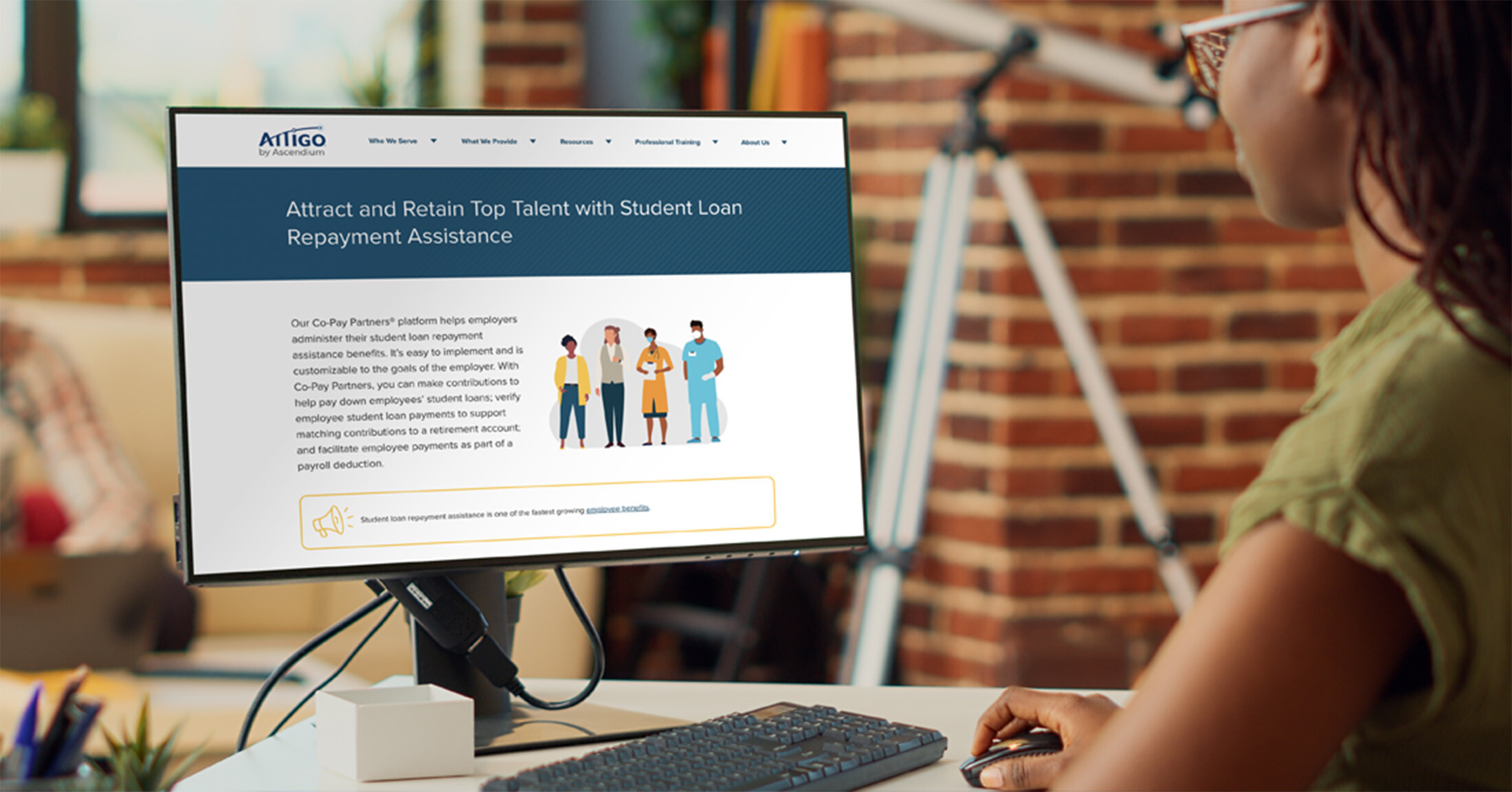The Impact of the SECURE Act 2.0 on Student Loan Repayment and Retirement Planning

It’s official — the Securing a Strong Retirement Act (SECURE Act 2.0) was signed into law in late 2022, and that means that starting Jan. 1, 2024, a number of changes are coming for employers and employees alike. While the new law provides fresh opportunities for anyone saving for retirement, those who also have student loans in repayment will no longer have to choose between increasing their retirement savings or reducing their student loan debt.
How does the SECURE Act 2.0 affect student loan borrowers?
Some of the most promising aspects of the SECURE Act 2.0 for student loan borrowers are changes to employer contributions. The SECURE Act 2.0 lets employers treat employees’ payments toward student loan debt as if they were 401(k) contributions for matching purposes. Prior to this change, people often missed out on employer match opportunities because they had to repay their student loans rather than fund their retirement accounts. Specifically, under the SECURE Act 2.0, matching contributions to employees' retirement plans are based on qualified student loan payments (Source: studentaid.gov).
What is a qualified student loan?
According to the IRS, a qualified student loan is a loan taken out solely to pay qualified education expenses related to education provided during an academic period for an eligible individual, their spouse, or a dependent that was paid or incurred within a reasonable period of time before or after the loan was taken (Source: irs.gov). Under this definition, federal student loans, private student loans, and loans used to refinance education loans can be considered qualified student loans. Additional guidance on whether Parent PLUS loans can also be considered qualified student loans is still pending.
Which employees are eligible for matching contributions?
To be eligible for matching student loan payments, employees must meet the following requirements.
- Be eligible to make elective deferrals and receive matching contributions under their employer’s retirement plan.
- Make elective deferrals to the retirement plan.
- Make qualified student loan payments.
How are contribution amounts determined? Is there an annual limit?
Fortunately, the formula for new student loan matching contributions under the SECURE Act 2.0 must follow the current retirement contribution formula (Source: Investopedia.com). Under the new provisions of Internal Revenue Code Section 401(m)(4), any match must be based on student debt repayments for higher education expenses plus any other elective deferrals the participant may make to the plan. Eligibility, match rate, and vesting also must be the same as that for the match on elective deferrals (Source: benefitslawadvisor.com). Here are some helpful examples of student loan match scenarios (Source: rsmus.com)
What kind of verification of employee payment is required?
“In order to receive this new type of matching contribution, eligible employees must certify that eligible loan payments have been made on an at annual basis — the plan sponsor is not required to conduct an independent review” (Source: foley.com).
Why should employers add this feature to their employee retirement savings plan?
- Attract and retain top talent. Adding student loan contribution matching to their retirement savings plan can give employers a competitive edge over other employers.
- Reduce financial stress and improve productivity. Student loan contribution matching helps employees focus on debt reduction while saving for retirement. That could lead to better job performance and increased engagement.
- Foster employee loyalty and engagement. Helping your employees reduce their financial stress with student loan contribution matching demonstrates your empathy and understanding of the challenges they face, both in and outside of work. Fostering this type of relationship can forge a stronger connection with employees, which may lead to stronger retention.
- Enhance corporate social responsibility. Student loan contribution matching aligns with the principles of corporate social responsibility and the idea that businesses have a broader role in society beyond making a profit.
- It’s in the budget, and it’s tax exempt! Plan sponsors have already budgeted for matching contributions. While more participation leads to increased matching contribution costs, these matching contributions can be taken as deductions on corporate income tax returns, just like regular contributions.
Need a hand getting started? Attigo’s suite of employee benefit solutions can help. Whether it’s student loan counseling, online financial education, or student loan repayment assistance, our 50+ years of experience, know-how, and industry insight can help you optimize your employee benefits and provide your employees with valuable resources to manage their student loans. Co-Pay Partners will verify monthly payments across all student loan servicers starting January 2024.
The information in this article is for general informational purposes only. It does not constitute legal, financial, or other individualized expert advice and may not be relied on as such.


